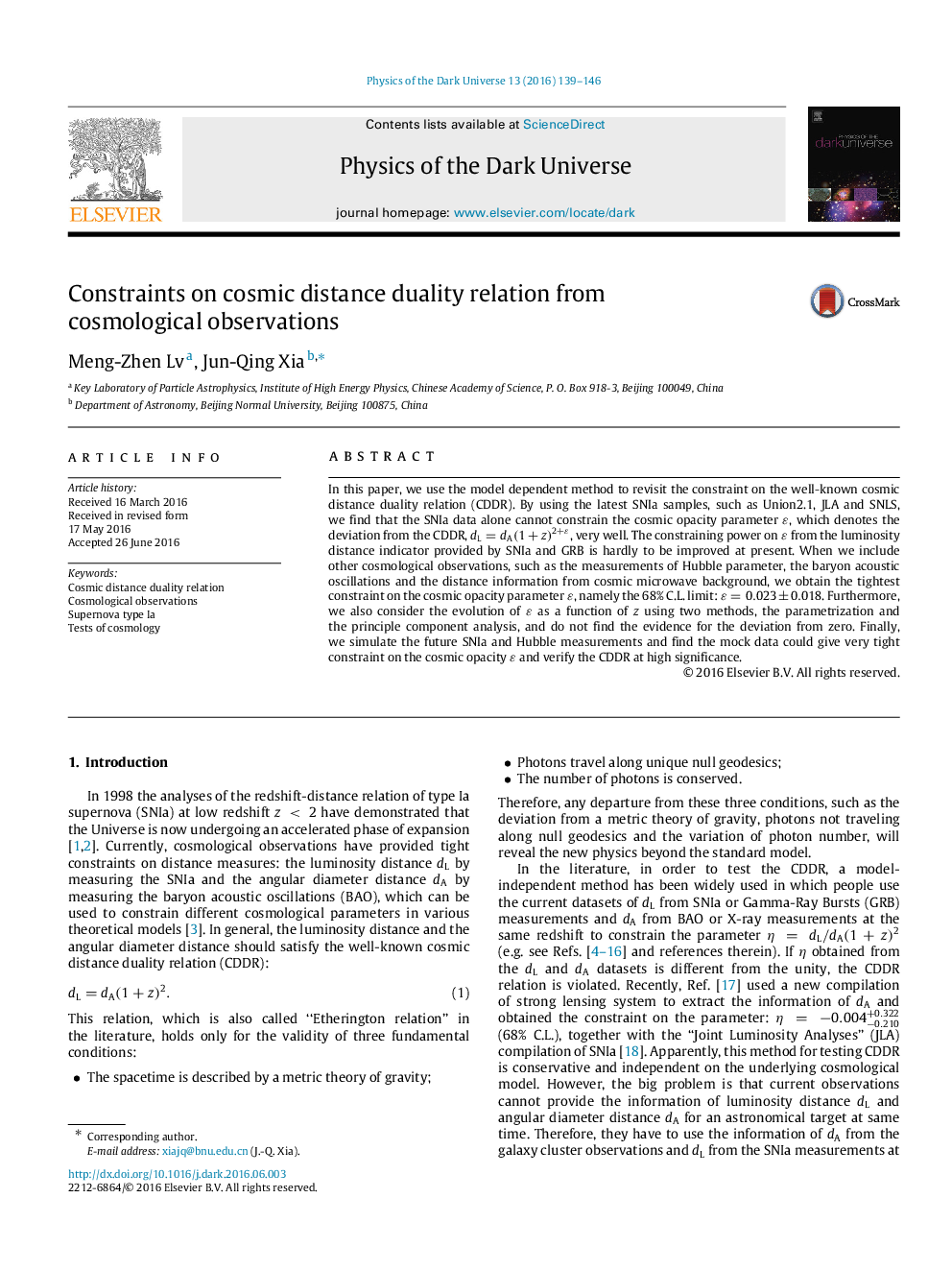| Article ID | Journal | Published Year | Pages | File Type |
|---|---|---|---|---|
| 1780728 | Physics of the Dark Universe | 2016 | 8 Pages |
In this paper, we use the model dependent method to revisit the constraint on the well-known cosmic distance duality relation (CDDR). By using the latest SNIa samples, such as Union2.1, JLA and SNLS, we find that the SNIa data alone cannot constrain the cosmic opacity parameter εε, which denotes the deviation from the CDDR, dL=dA(1+z)2+ε, very well. The constraining power on εε from the luminosity distance indicator provided by SNIa and GRB is hardly to be improved at present. When we include other cosmological observations, such as the measurements of Hubble parameter, the baryon acoustic oscillations and the distance information from cosmic microwave background, we obtain the tightest constraint on the cosmic opacity parameter εε, namely the 68% C.L. limit: ε=0.023±0.018ε=0.023±0.018. Furthermore, we also consider the evolution of εε as a function of zz using two methods, the parametrization and the principle component analysis, and do not find the evidence for the deviation from zero. Finally, we simulate the future SNIa and Hubble measurements and find the mock data could give very tight constraint on the cosmic opacity εε and verify the CDDR at high significance.
